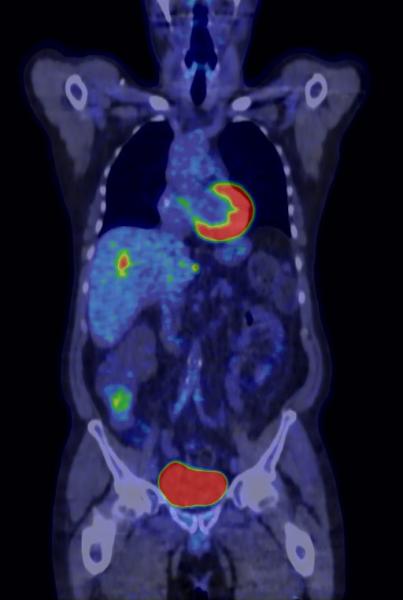
Greg Freiherr has reported on developments in radiology since 1983. He runs the consulting service, The Freiherr Group.
The New Age of Personalized Medicine

PET/CT helps bring personalized medicine within reach of practitioners. (Image courtesy of GE Healthcare)
We are seeing a semantic shift in medicine, one that is redefining personalized medicine from pie in the sky to piece of cake, undoable to doable. This redefinition uses tools within our grasp rather than tomorrow’s genomic machinations to individualize the assessment of disease risk, find its occurrence and refine treatment.
This shift is huge. It is not only ushering in a new present for medicine, but broadening the tools for making it work. Those in radiology today and in the future will comprise some of the best to personalize healthcare. They will grow in importance in the years ahead as research uncovers more of the biological changes and disease indicators that molecular imaging can target.
It’s hard to say when — or even whether — these efforts will rise to the hype generated in the late-1990s that surrounded the decoding of the human genome. With its many pieces in place, the genomic puzzle was supposed to draw back the curtains on human vulnerability, revealing the differences among individuals that explained why one person developed cancer, for example, while another did not. These developments would be upstaged by explanations of why some patients respond well to treatments when others do not, providing the means to fine-tune the diagnostic and therapeutic to best manage patients — or even fix the faults in the genetic machinery to prevent some diseases altogether.
Despite more than a decade of looking, however, physicians still do not see the genetic chinks that form in the human armor against disease, much less the tactics for straightening out dysfunctional genetic materials to prevent diseases. Research is, however, uncovering more of the biological bits and pieces associated with early disease.
Evolving these biomarkers into targets for molecular imaging is beginning to provide the means to verify disease processes early in their development. They are also showing promise as the means to monitor the impact of therapy, as well as the recurrence of these processes after therapy has initially succeeded.
Moreover, advances in molecular imaging scanners are providing the means to more precisely visualize and even quantify these processes. As research continues into the genes that may form the soft underbelly of human disease, new and more specific biomarkers will emerge. These will translate inevitably into more personalized healthcare with tailored solutions occurring in a radiological spotlight cast by molecular imaging.
But meeting these technological challenges is not sufficient. It must be accompanied by advances in education to ensure that newly developed capabilities in personalized medicine are integrated into the practice of medicine. Clinical guidelines must become living documents that go beyond diagnosis and treatment to prediction and disease monitoring. And reimbursement, the engine of adoption, must expand to cover practices not now in use.


 January 06, 2026
January 06, 2026 









